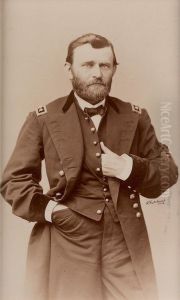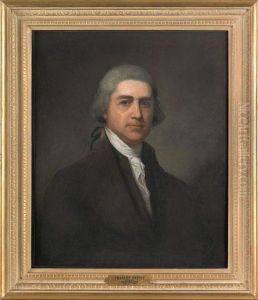Frederick Gutekunst Paintings
Frederick Gutekunst, born on September 25, 1831, in Germantown, Pennsylvania, was an esteemed American photographer known for his portraits of notable figures during the 19th century. Gutekunst, of German descent, initially pursued a career in the printing industry but was drawn to photography, a burgeoning art form at the time. His interest in photography led him to open his own studio in Philadelphia around 1856.
Gutekunst quickly gained recognition for his skillful portrait work. His technique and attention to detail were such that he was sometimes referred to as the 'American Van Dyck,' a nod to the 17th-century Flemish painter known for his distinguished portraits. Gutekunst's reputation was greatly enhanced when he was chosen to photograph General Ulysses S. Grant during the Civil War. The portraits of Grant became some of the most famous images of the Union general and future president, cementing Gutekunst's status as one of the premier photographers of his time.
Throughout his career, Gutekunst continued to photograph many influential individuals, including politicians, military leaders, scientists, artists, and writers. Beyond portraits, he also captured historical events and landscapes. His work is characterized by a keen understanding of light and composition, which resulted in images that were both technically proficient and artistically compelling.
Gutekunst's studio in Philadelphia became a center of culture and a gathering place for the city's elite. His contributions to the field of photography extended beyond his own practice; he was involved in professional organizations and was known for his willingness to share his knowledge with others in the field.
Frederick Gutekunst remained active in photography until his retirement. He passed away on April 27, 1917, leaving behind a legacy of photographic works that continue to be studied and appreciated for their historical significance and artistry. Gutekunst's photographs provide an invaluable visual record of American society during a transformative period in the nation's history.

